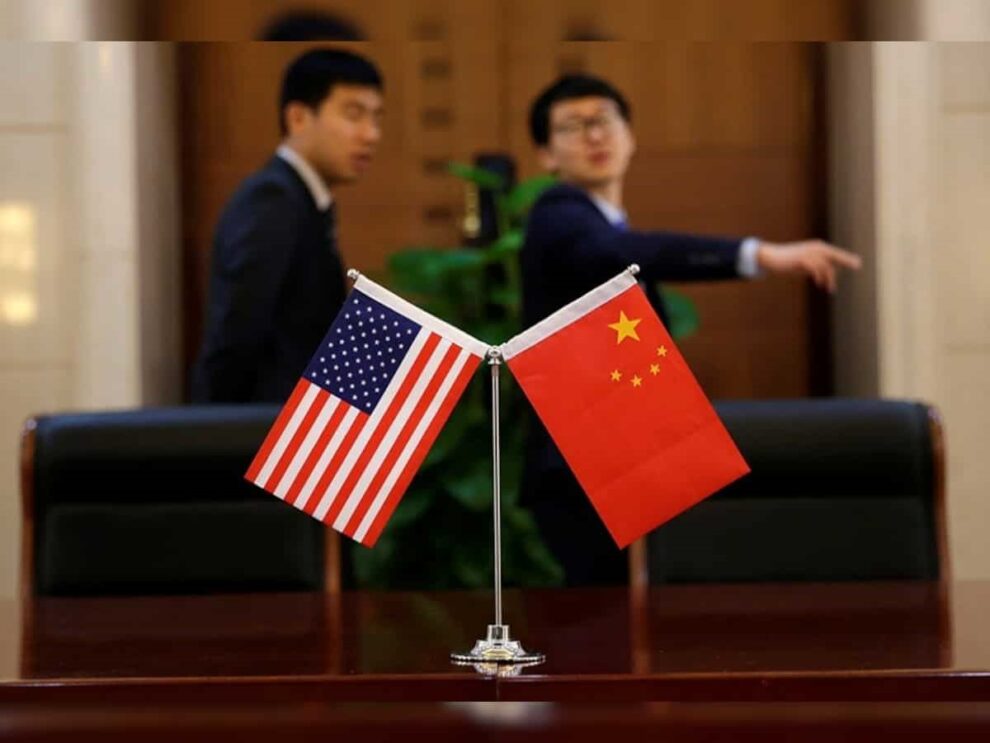On July 13 and 14, Wang Yi, the newly re-appointed Chinese Foreign Minister visited Jakarta to attend the 56th ASEAN Regional Forum and the 13th East Asia Summit Foreign Ministers’ Meetings. During these meetings, Wang held several bilateral exchanges, including with US Secretary of State Antony Blinken, Indian External Affairs Minister S Jaishankar, and Russian Foreign Minister Sergey Lavrov. He also participated in an ‘ASEAN+3’ meeting, with representatives from the ten countries of the Association of South East Asian Nations (ASEAN), as well as Japan and South Korea. His engagements aimed at assuaging regional anxieties surrounding China’s belligerent rise and its intensifying rivalry with the US. However, his meeting with Blinken said otherwise.
In his speech at the ARF Foreign Ministers’ meeting, Wang presented a three-point proposal for regional security, and in his subsequent meeting with the ASEAN+3 countries, he discussed three ways for the partnership to progress. Both of these comprised his central message to regional countries, which was that China is the right developmental partner for regional countries to embrace, and any contentions pertaining to economic or military security must be addressed without inviting interference from an external actor.
For example, in his introductory speech, Wang stated that the region must promote ‘common’, ‘cooperative’, and ‘universal’ security, which was a reiteration of the primary principles of Xi Jinping’s flagship Global Security Initiative (GSI), and sought to undermine the American security predominance in favour of a China-led model. He also emphasised ‘pragmatic cooperation’ to build mutual trust. To that end, Wang suggested that regional countries find “less sensitive” areas of cooperation, which potentially include counter-piracy, humanitarian assistance and disaster relief (HA/DR), and climate change, and may fare better in their prospect of building mutual trust. He also emphasised “adherence to inclusiveness;” an emphasis that serves to provide an alternative approach to the US’s ‘Free and Open’ Indo-Pacific concept.
The economic overtone was even more evident in his address to the ASEAN+3 meeting, where he proposed that the member countries should “uphold opening-up and cooperation,” accelerate the regional integration, allow for Hong Kong’s accession to the Regional Comprehensive Economic Partnership (RCEP), and acknowledge China’s leading role in the construction of “stable, smooth and comparative advantage-based regional production and supply chains.” He also reminded member countries of China’s contributions to the ASEAN Emergency Rice Security Mechanism and Electric Vehicle Ecosystem, while also claiming that China is their best bet in their quest towards poverty alleviation and rural empowerment. The essence of his arguments is two-fold: one is that China is open for business and is seeking increased interlinkedness. The second is that because China has already experimented successfully with policies on food security, EV supply chain management and poverty alleviation, it is now projecting itself as the most appropriate business partner for ASEAN countries to approach – which is also how China understands ‘pragmatic cooperation’.
However, Wang’s message was received with caution and suspicion by ASEAN member countries. The lack of significant progress in deliberations over competing claims in the South China Sea overshadowed any hope for substantive confidence-building. The ARF Foreign Ministers’ meeting witnessed the second reading of the draft of the Code of Conduct in the South China Sea, which has been pending for 20 years, and the issuance of a guideline document on speeding up the negotiations on the CoC. However, the final Chairman’s Statement of the 13th EAS Foreign Ministers’ meeting sounded the warning that any further discussion on the CoC must be undertaken in the spirit of the 1982 UN Convention on the Law of the Seas, to “reduce tensions and the risk of accidents, misunderstandings, and miscalculation.” Moreover, just a few days before these meetings, the Philippines marked seven years of the award of the Permanent Court of Arbitration ruling against China in 2016, which invited an infuriated response from China. So clearly while there might be greater talk of cooperation, security anxieties and competition remain the dominant motif in the region.
Moreover, the proceedings of the Wang-Blinken meeting on the sidelines of the ARF Foreign Ministers’ meeting also did not yield a lot of confidence, even though it was a positive sign that the two sides were conducting high-level dialogue. During the meeting, Wang highlighted that to mend their relations, the two sides need to resolutely stop “gray rhinos”, properly handle “black swans” and thoroughly remove “tigers blocking the way”. Essentially, his message to the US was that short and long-term high-impact incidents, such as Taiwan-related contingencies or the controversy surrounding the Chinese ‘spy balloon’, need to be managed more “rationally” in order to bring some semblance of stability in the relationship. This also serves as China’s acknowledgment that the relationship is indeed at its lowest point at the current juncture.
Regional countries, especially ASEAN member states, see the bettering of US-China relations as absolutely essential to peace and stability in the region. This sentiment is echoed in Indonesian Foreign Minister Marsudi Retno’s statement at Jakarta, in which she said, “The Indo-Pacific is not a battleground. This region must remain stable.” ASEAN countries also seek diversity in partnerships, and expect China to act in a manner that is necessary to build the mutual trust it vehemently propagates. To that end, the conclusion of the CoC and its implementation in good faith is a necessary factor. And as Singaporean Foreign Minister Vivian Balakrishnan argued at the meeting, even though political will has been expressed to take the CoC forward, it is a “complicated process,” and it has already been two decades since the DoC was signed as an “interim, stopgap” measure.
Overall, regional countries are looking to maximise economic gains, while great powers like China and the US are looking at regional issues from a largely strategic perspective. It is this dissonance in approach that has created both, a geopolitical dilemma and an opportunity for negotiation for regional countries.
Source : WION










